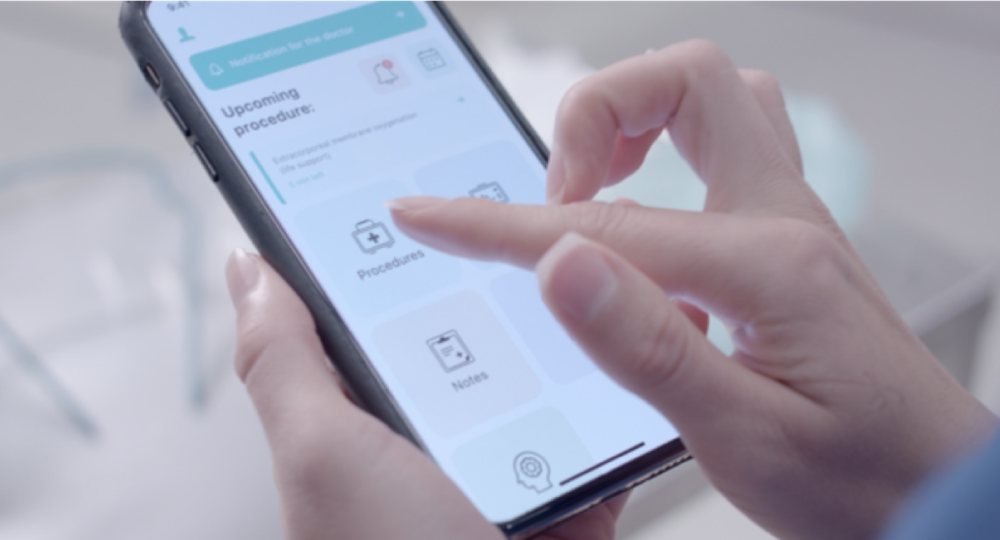Technologies
Discover, Connect & Collaborate at TECHINNOVATION 2021
Guideline Adherence and Management System at the Point of Care

Technology Overview
This technology offer is a Guideline Adherence and Management System with a mobile application, which makes nursing protocols easily actionable and accessible. By providing step-by-step guidelines, the system helps to improve the quality of care and prevent adverse events. Comfortable content creation and management provided by the Content Management System makes keeping protocols up-to-date effortlessly and enables data-based decision making. In addition to medical staff and junior nurses, this system can also be used by patient’s family members and caregivers to support post-discharge care at home. This system is a comprehensive safety net tool for all stakeholders in the care continuum.
This technology offer helps to address the problem of preventable adverse events (PAEs) in healthcare. It is estimated that up to 40% of patients suffer an adverse event when admitted to hospital. PAEs negatively impact the quality of care, patient safety, as well as medical staff morale, and may prolong patients’ hospital stay, cause permanent harm, and even result in a fatal outcome. As PAEs are one of the main cost driver for hospitals, there is a need for hospitals to significantly reduce the incidence of PAEs.
Technology Features, Specifications and Advantages
Hospitals attempt to solve the problem of unwarranted care variation by developing checklists to enforce adherence to clinical guidelines. Evidence demonstrates that checklists improve patient safety - in surgical settings, they have shown to reduce the rate of complications from 11% to 7%. However, checklists use is inconsistent as they are not well integrated into current workflows. Their efficacy is reduced by their inaccessibility at the point of care (most checklists are paper- or PDF-based). Instead of providing support, their use increases nurses’ information overload and workload. The latter is associated with a higher risk of PAEs.
This technology focuses on making clinical guidelines actionable and accessible at the point of care. This ensures guideline adherence and the subsequent benefits: improvement in patient safety, care efficiency and cost. Moreover, this technology allows tailoring guidelines to specific institutions. It allows knowledge sharing between hospitals to promote best practices, e.g., to support rural hospitals. This technology is easily adaptable to different institutions (hospitals, nursing homes, nursing schools), users (nurses, nursing students, patients’ family members) and situations (night shifts, emergency situations such as COVID-19, setting up medical devices). This technology increases guideline adherence up to 100% and it has the potential to significantly reduce the costs for healthcare systems (e.g., reduce nurses’ induction time from 15 to 3 days and cost by 80%).
The technology development team is currently on track to achieve Class I MDR compliance in Europe (by end of 2021) and FDA compliance in the US (by Q2 2023).
Potential Applications
The main market resides in the sectors of healthcare, higher education (nursing degrees), and medical device suppliers.
Hospitals
- Decrease adverse events.
- Make nurses onboarding more time and cost efficient.
Nursing schools
- Enhance online and remote learning.
- Support simulation learning.
Patients/family members
- Facilitate the hospital-to-home care continuum by effective inclusion of patients and their informal caregivers through a personalised treatment plan delivery system.
Medical device suppliers
- Companion app to digitalise medical devices/equipment offering by tracking supply and providing relevant instructions to support the user when using or installing the medical device.
The market size (for the main market, hospitals) calculation is based on the number of nurses present in the target countries and on their yearly average salary, with the following calculation: Total addressable market (TAM) = total number of nurses in our target market * average yearly salary of nurses. Total TAM for current target countries (Austria, Estonia, Germany, Italy, Spain, Switzerland, United Kingdom, US, Japan, Georgia, Colombia, Chile, Perú) is 5 554 829 051.34 €
Customer Benefit
- Decrease preventable adverse events by 40% (Adverse events are expected to cost €384 billion by 2022 for EU and US)
- Reduce staff onboarding time from 15 to 3 days
- Reduce staff annual onboarding cost by 80%.
- Increase care standardisation
- Improve post-discharge care plan adherence and reduce related complications.
- Audit trail secured with blockchain timestamping.
- Performance statistics.